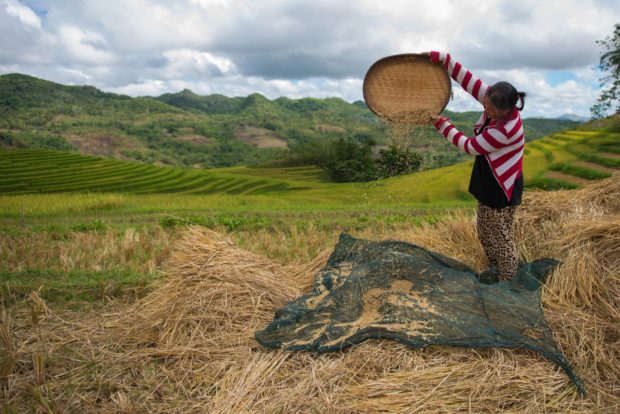The vital agriculture sector remains to be the smallest contributor to the economic growth among the major industries in the country, according to the Philippine Statistics Authority (PSA).
In a report, the PSA said agriculture, forestry and fishing’s (AFF) contribution to the country’s gross domestic product in 2021 was equivalent to a share of 9.6 percent against 10.2 percent a year ago.
This pales in comparison to the 60.5-percent share and 29.9-percent share of services and industry sectors, respectively, for the comparative period.
The essential sector’s performance is measured using the year-on-year growth of its gross value added (GVA) or the difference between the value of output and intermediate consumption.
The PSA took into account figures from 2017 to 2021, with 2018 as the baseline year for producing this report.
The GVA of the agriculture sector in 2021 stood at P1.78 billion, down slightly by 0.3 percent amid the gains made by certain subsectors.
In terms of GVA, the livestock industry incurred the biggest decline of 17.3 percent to P179.02 billion while poultry and egg production fell by 0.3 percent to P175 billion.
In contrast, the value of support activities to the AFF went up by 6.6 percent to P191 million.
Agricultural crop output climbed by 2.6 percent to P934.9 billion, with cacao and sugarcane leading the gains.
Palay, corn, coconut including copra, banana, mango, pineapple, coffee, rubber and tobacco also posted positive growth rates.
Cassava, abaca and other agricultural crops sustained decreases as they are yet to recover from the slump of 2020.
Meanwhile, other animal production rose by 0.9 percent to P69.3 billion while fishing and aquaculture registered a 0.2-percent increase to P223.5 billion.
Agricultural crops took the lion’s share in the GVA with 52.7 percent, followed by fishing and aquaculture with 12.6 percent and support activities to the AFF with 10.8 percent.
Livestock (10.1 percent), poultry and egg production (9.9 percent), other animal production (3.9 percent) and forestry and lodging (0.2 percent) accounted for the remainder.
On a geographic basis, all regions in Luzon except the National Capital Region, Cagayan Valley and Mimaropa recorded declines. The three regions returned to positive territory last year.
